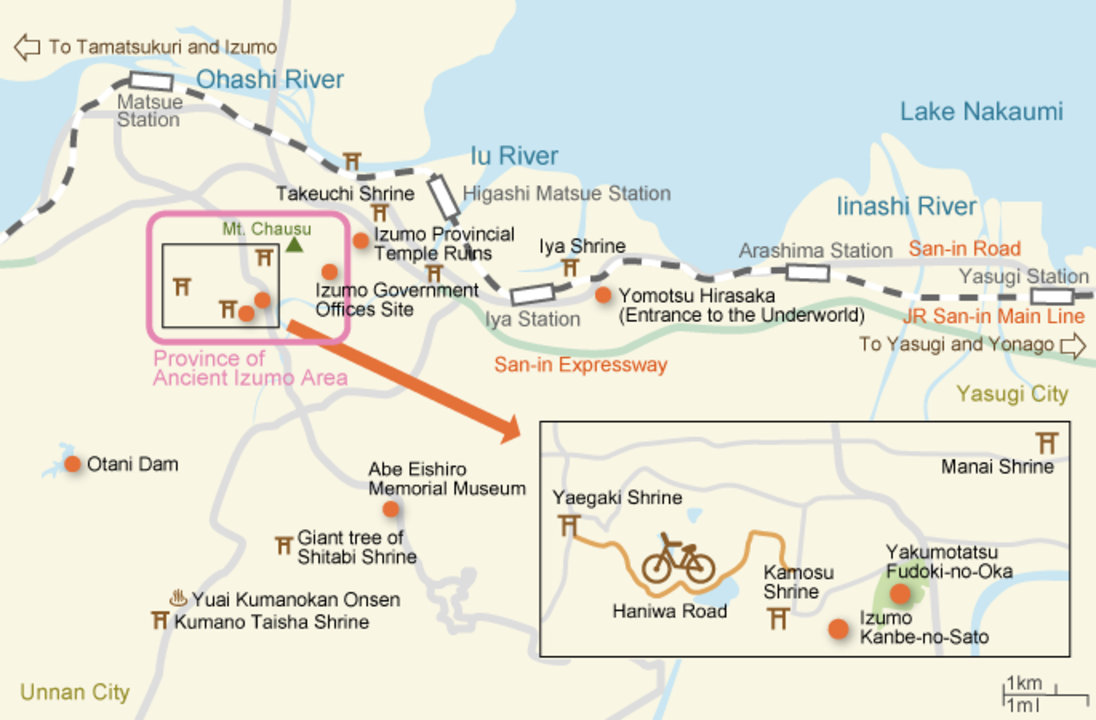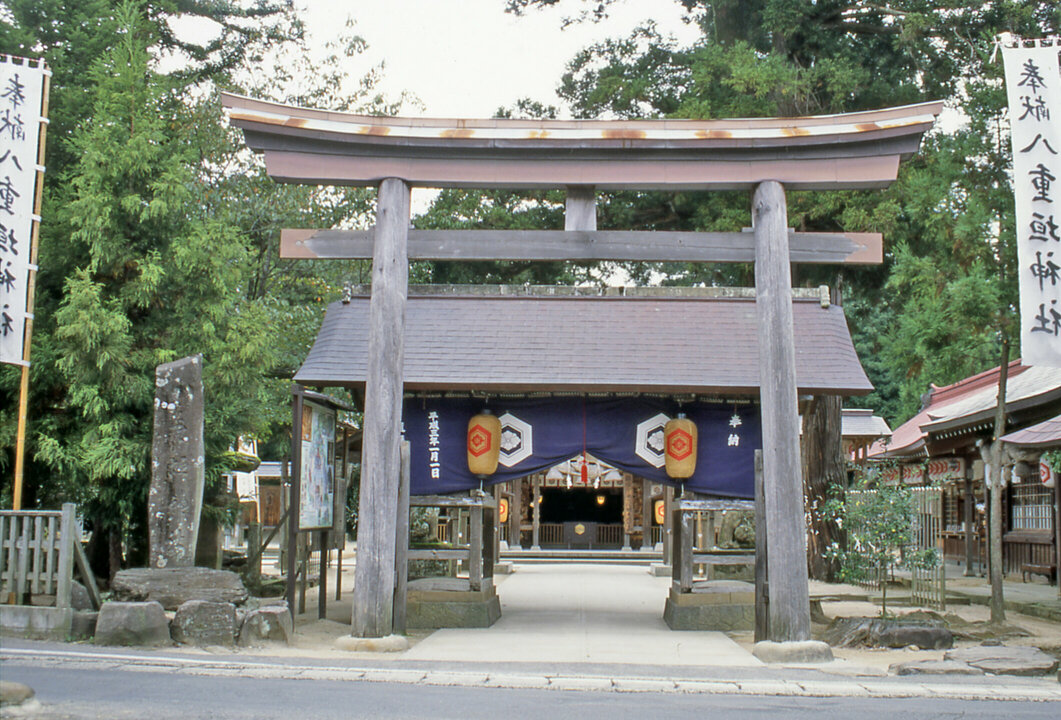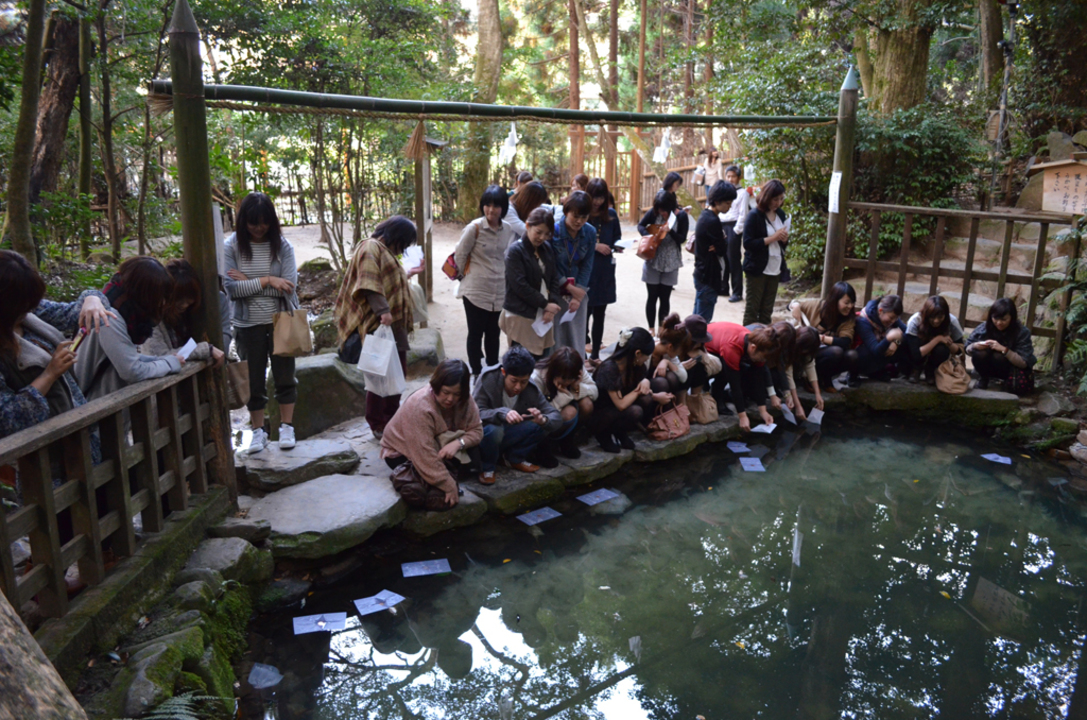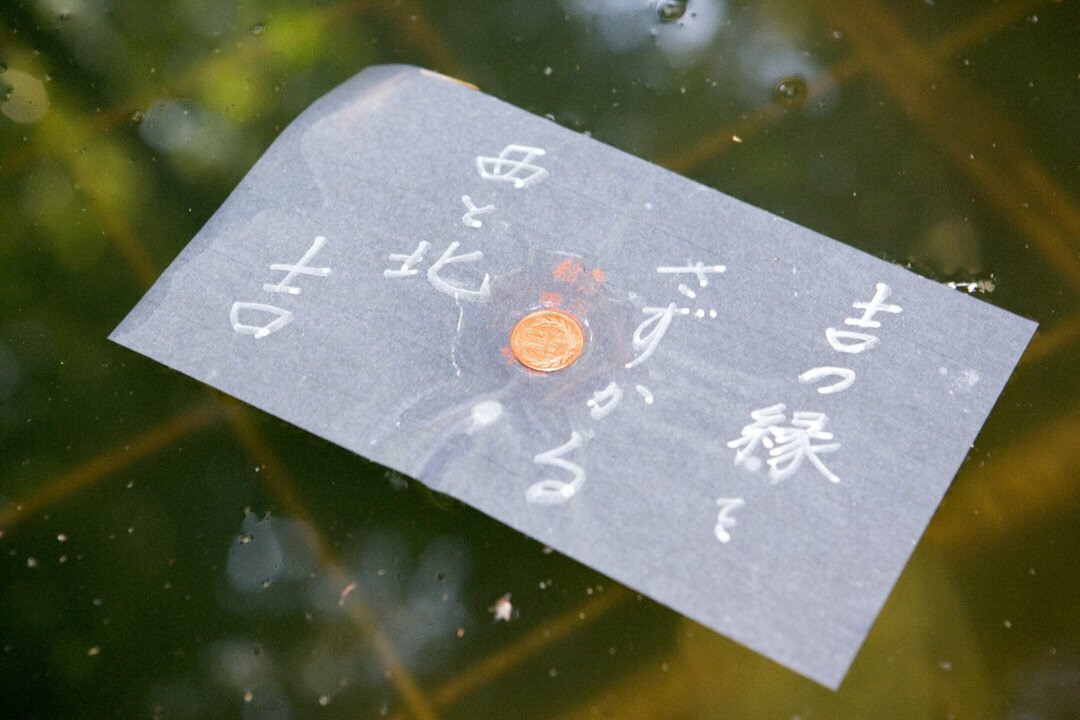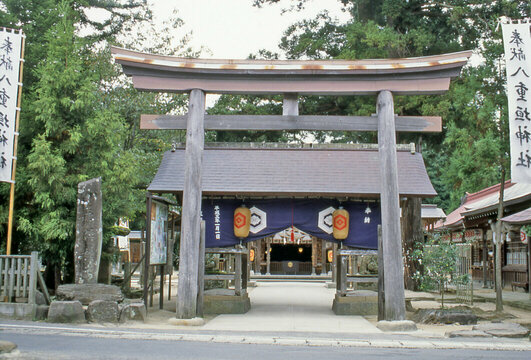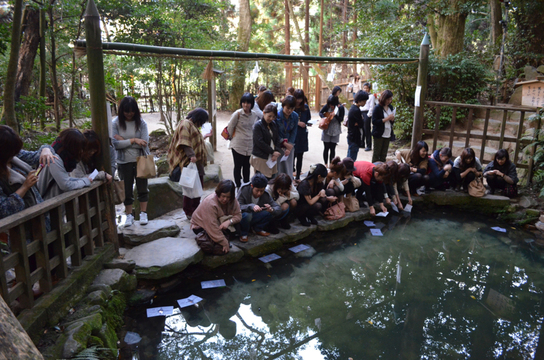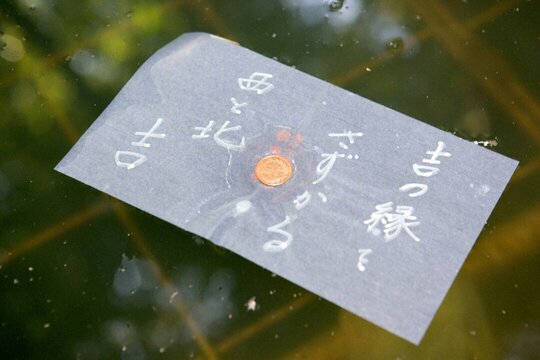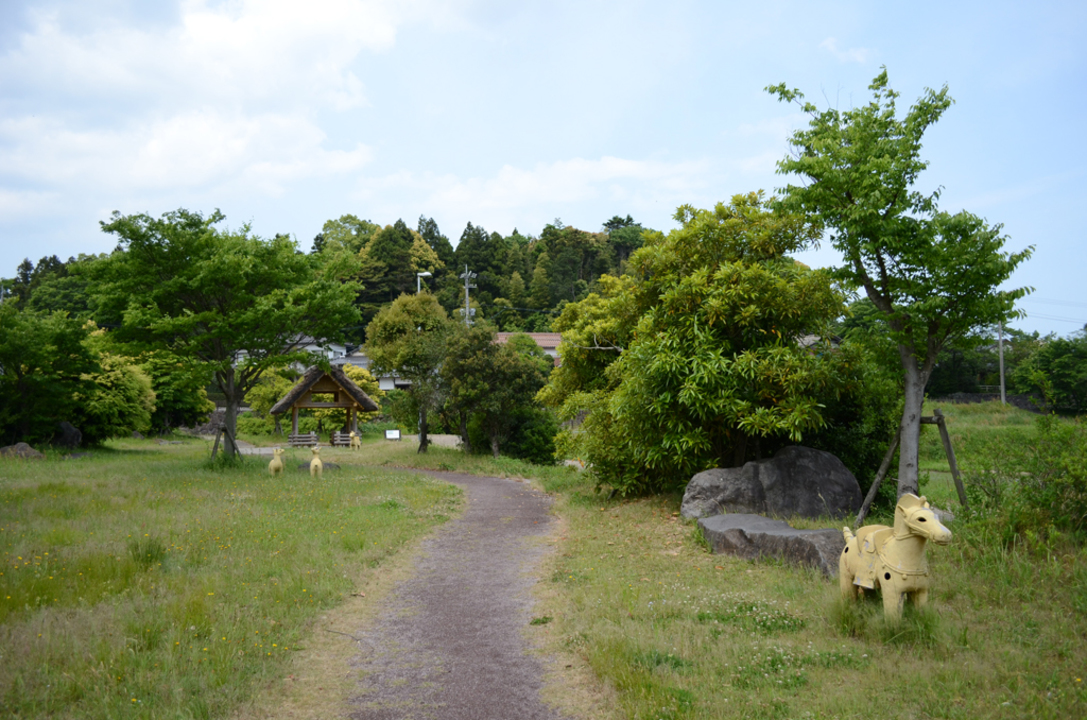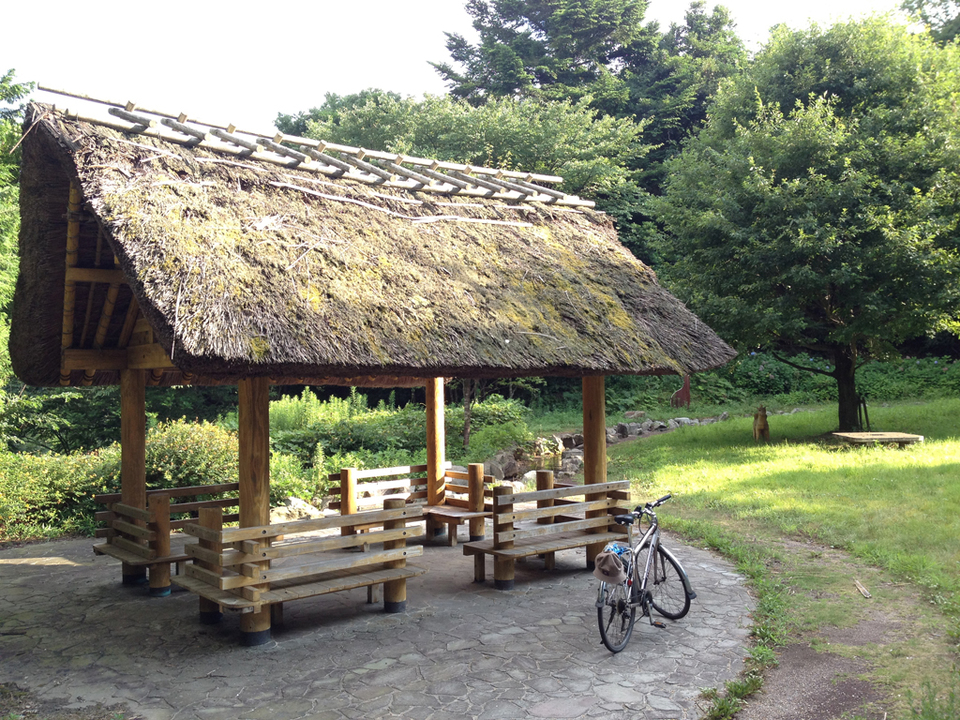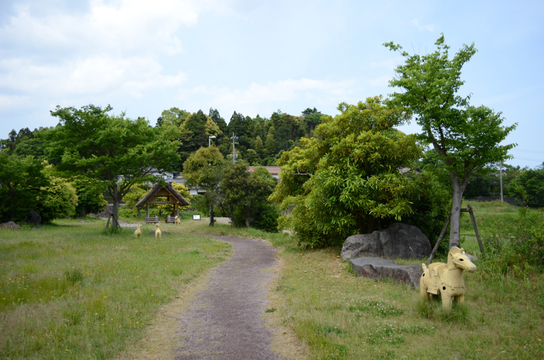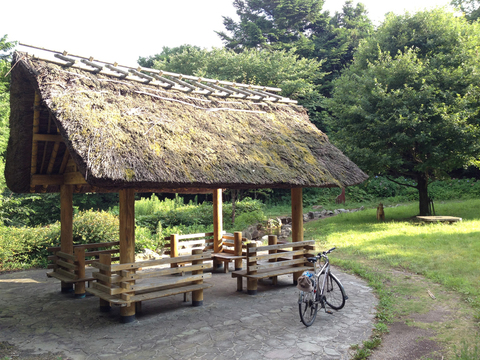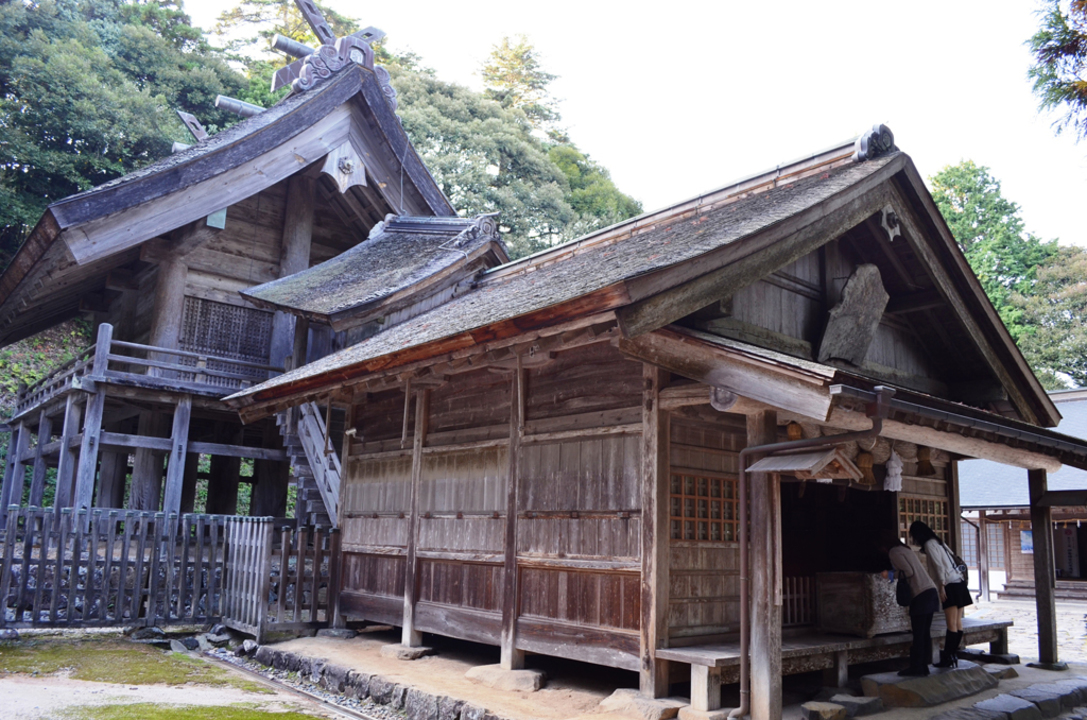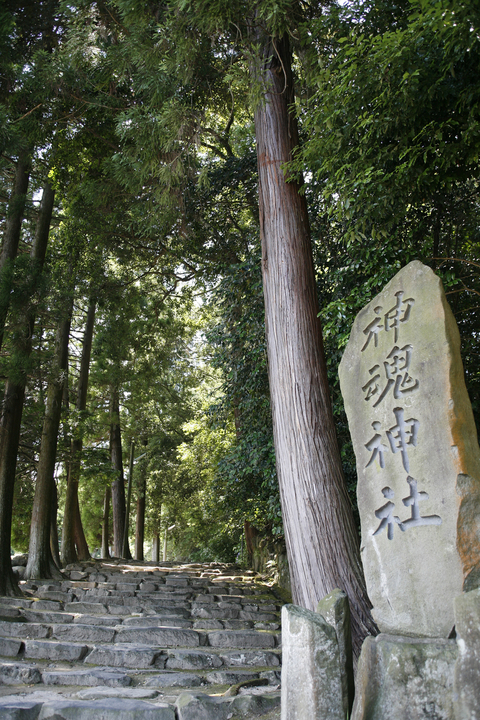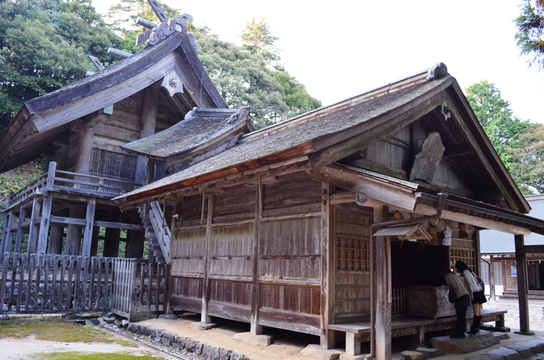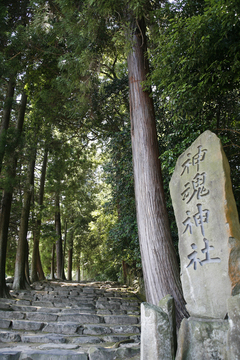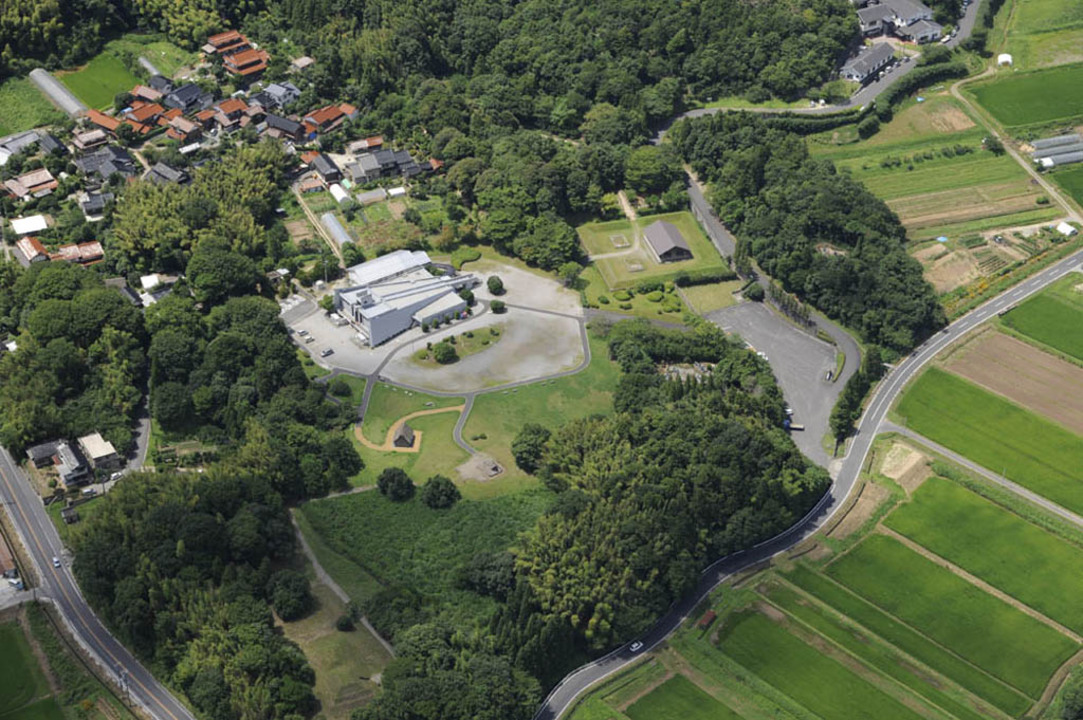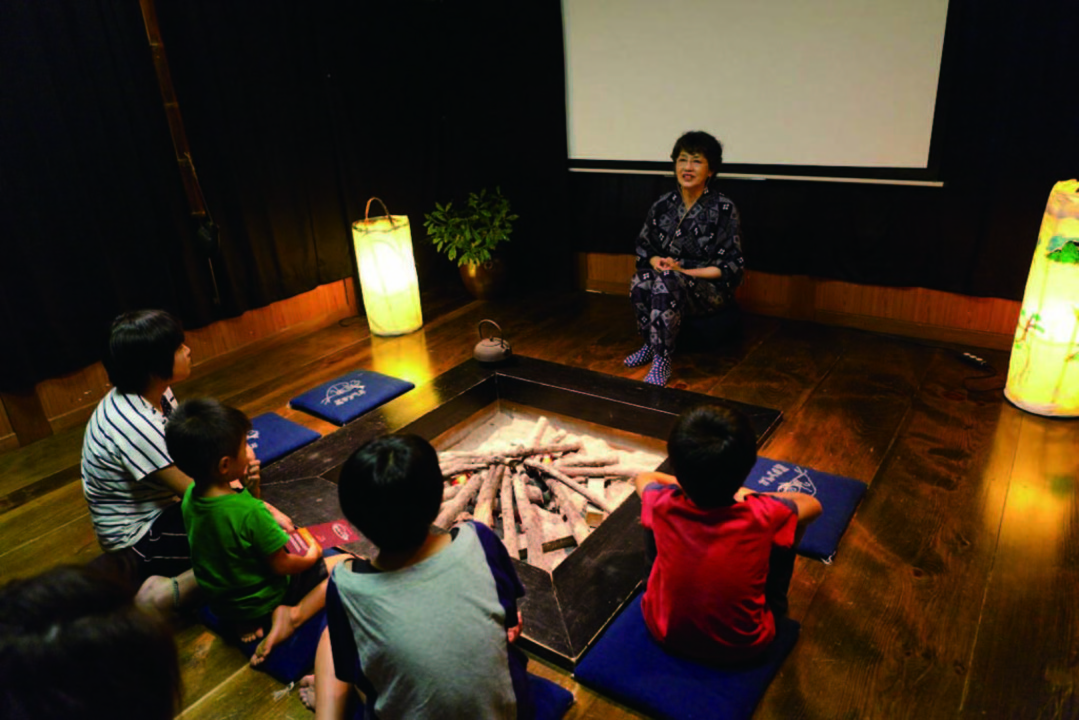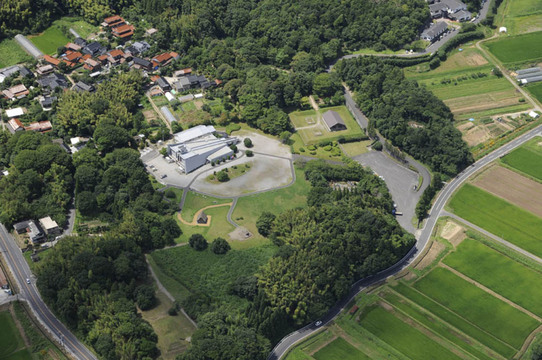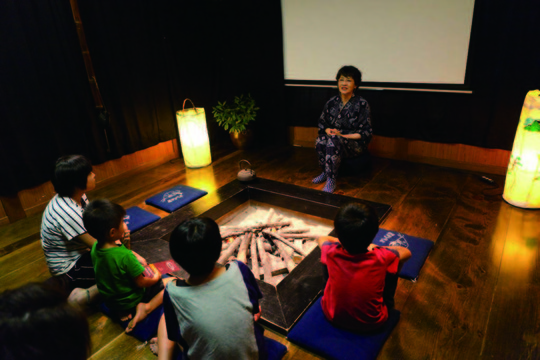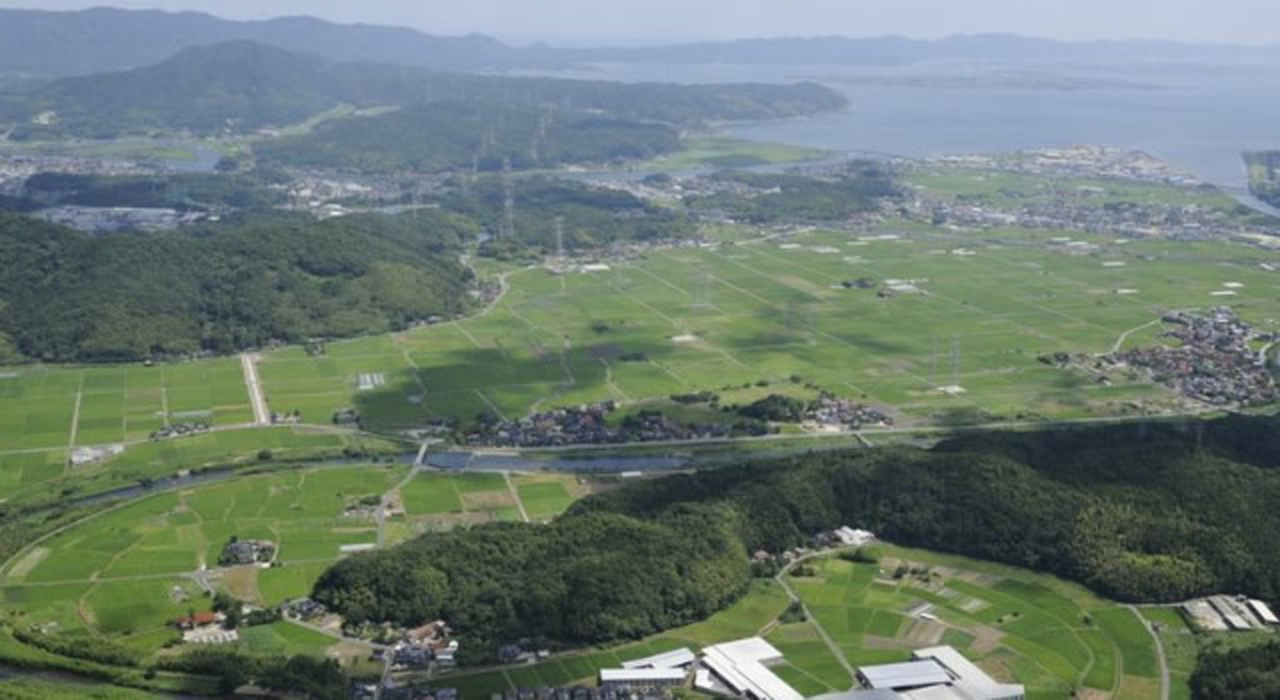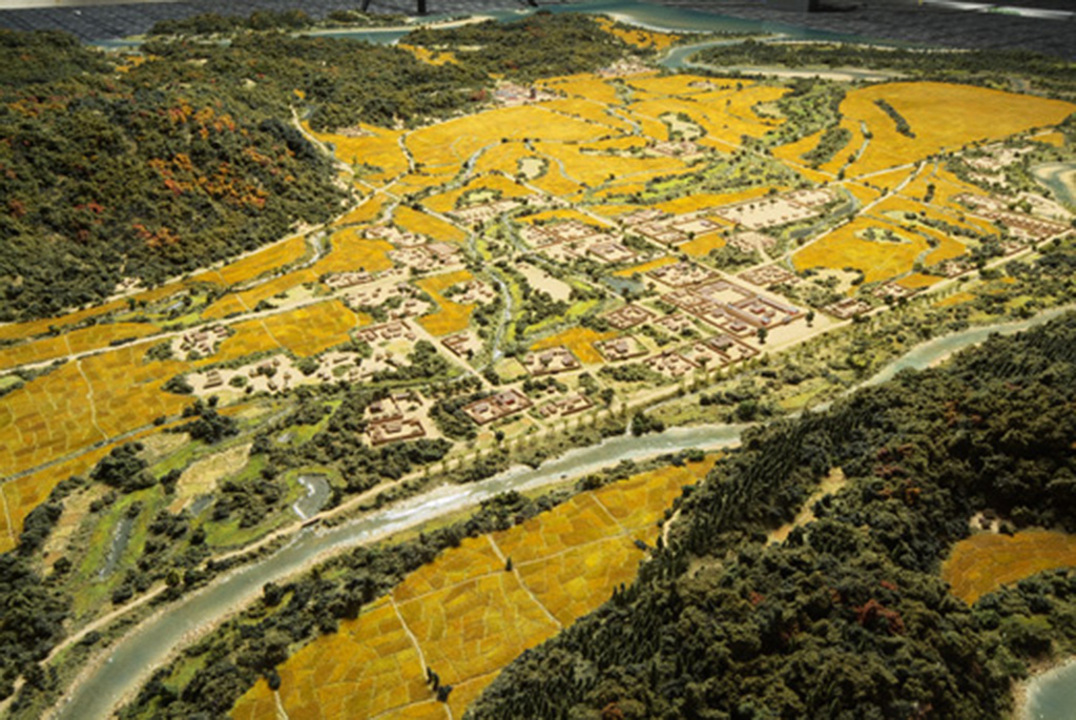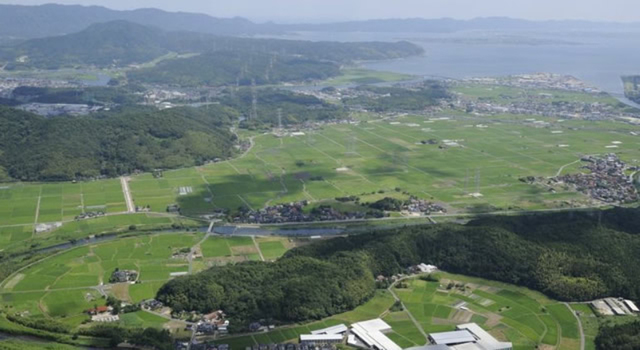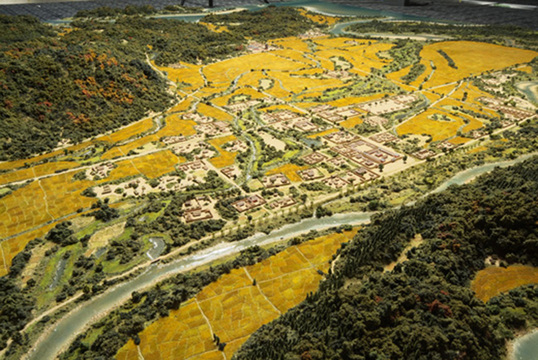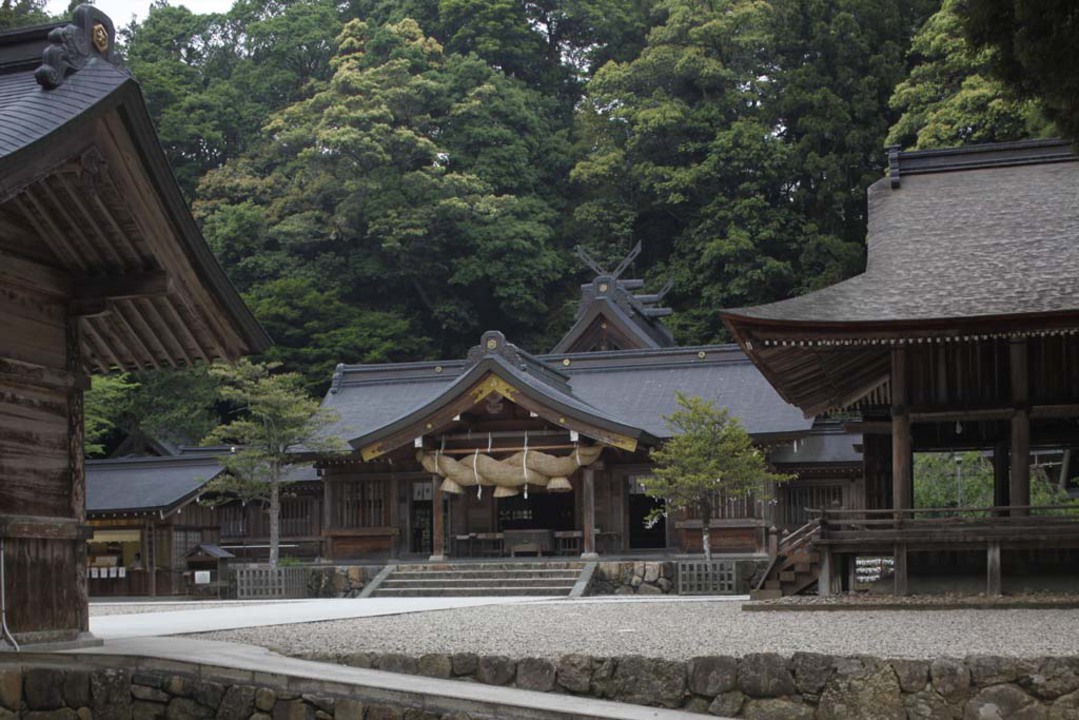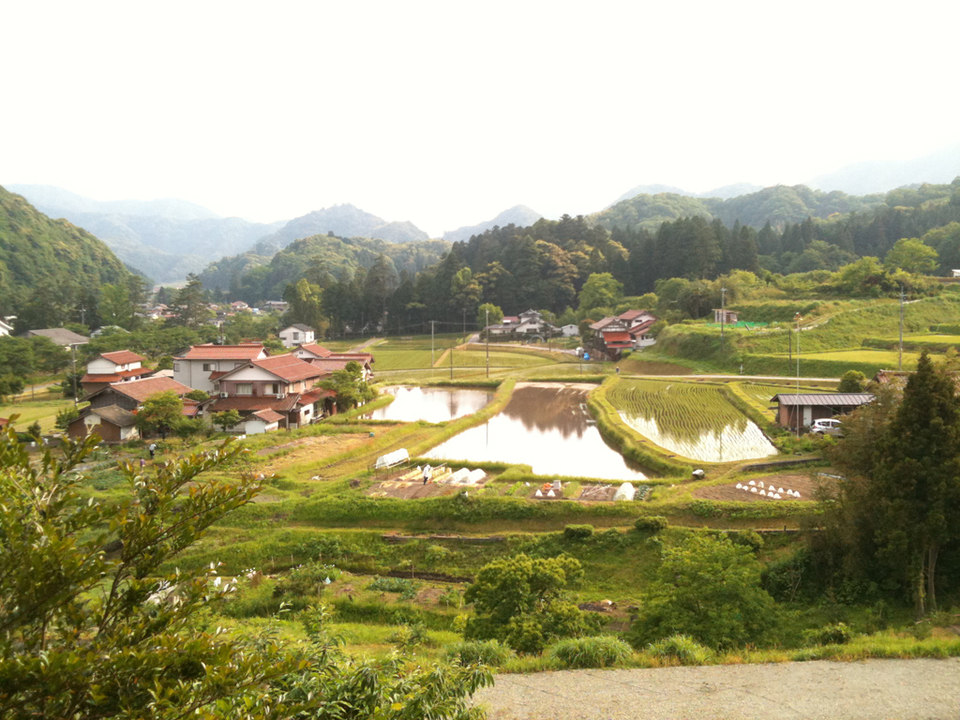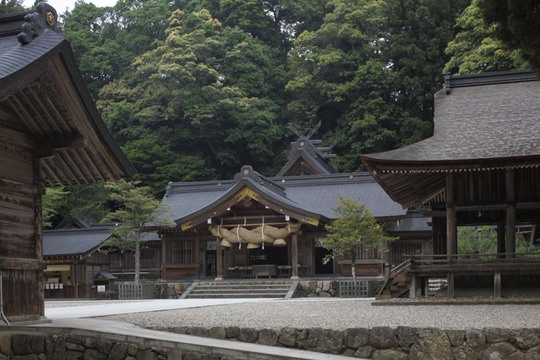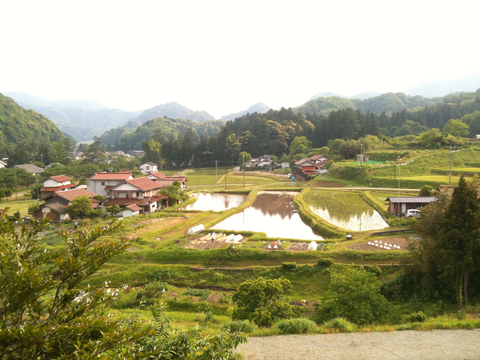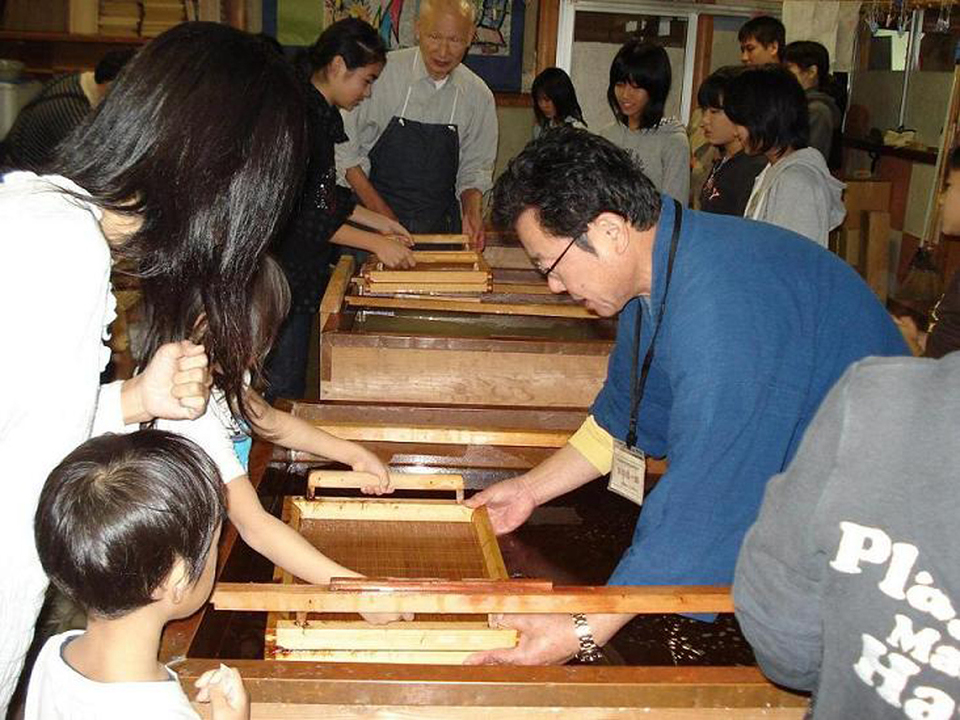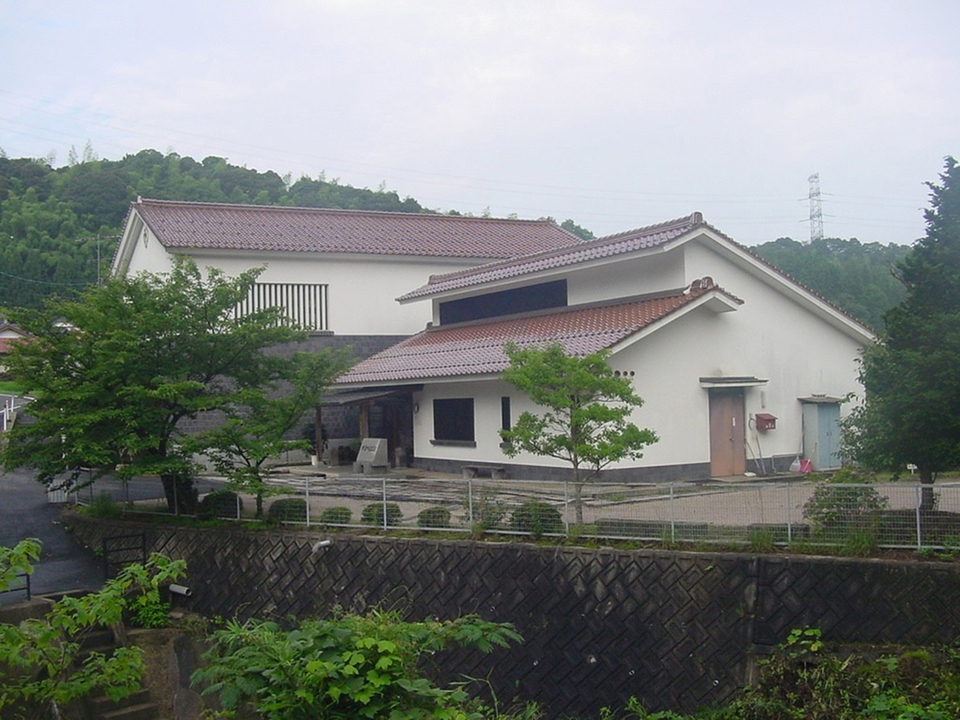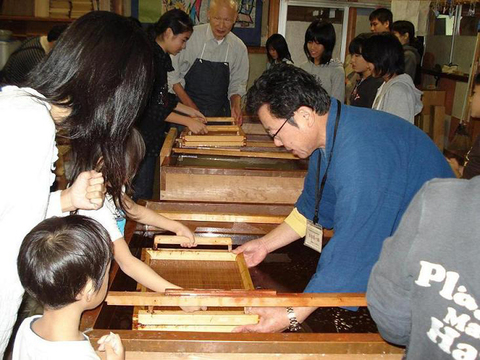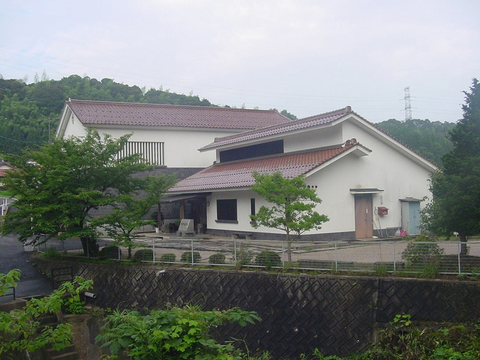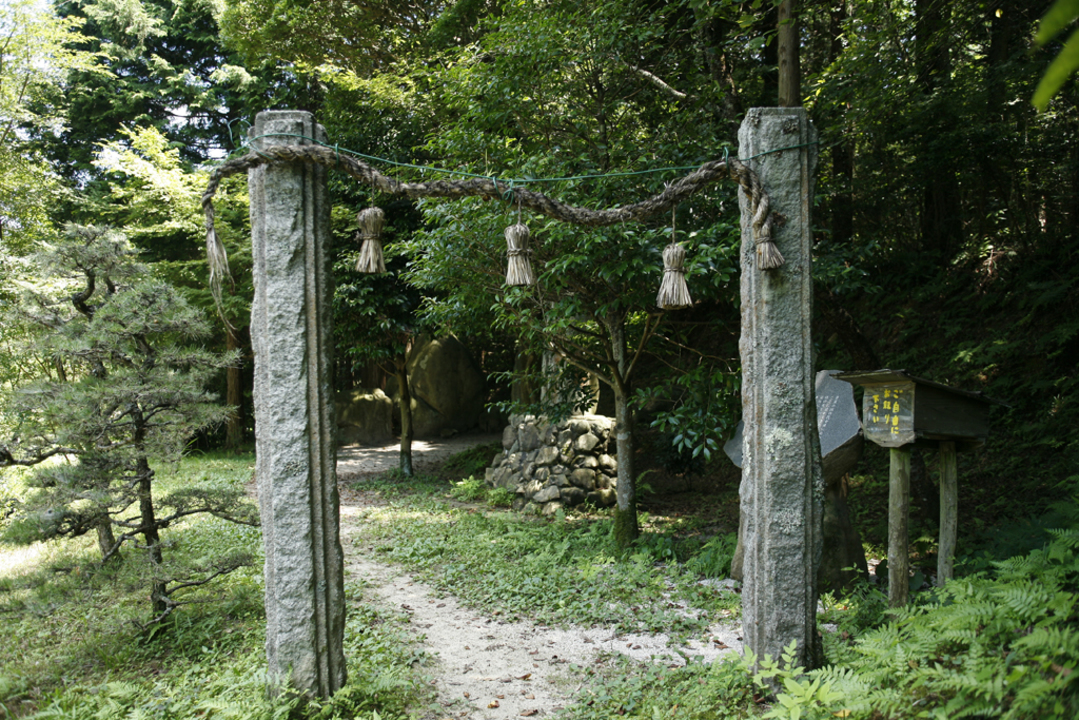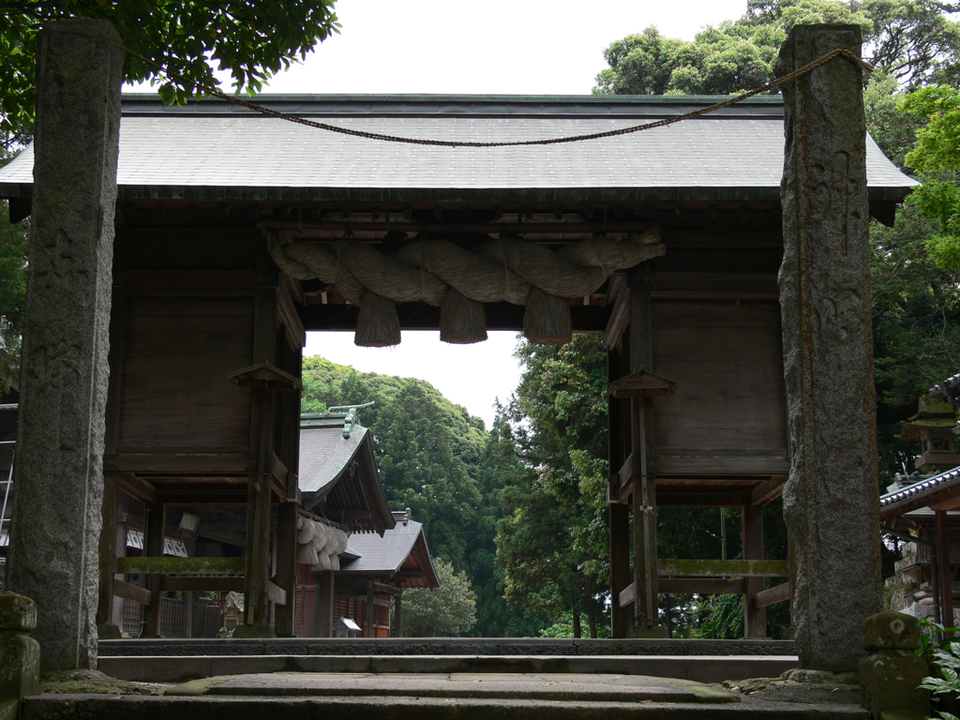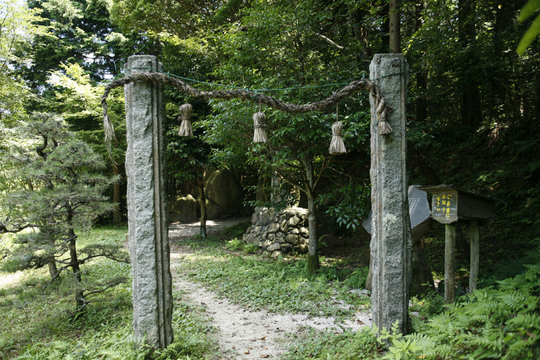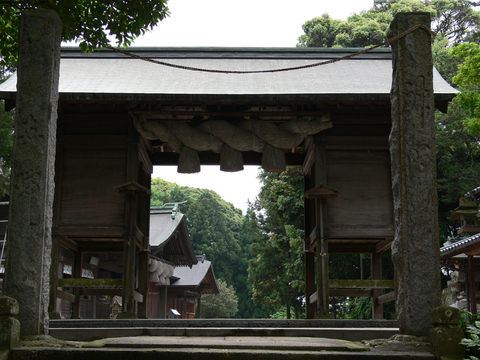Southern Matsue
Yaegaki Shrine – 八重垣神社
This shrine, dedicated to the gods Susanoo and Inata-hime, is thought to be the place where the first wedding in Japan was celebrated. It is hence a popular spot for people looking for En-musubi, the divine matchmaking force that binds people together. It is particularly popular for people seeking marriage partners, children, and health for their families.
Yaegaki Shrine appears in the famous legend of the Yamata-no-Orochi, the eight-headed giant serpent which was slain by Susanoo. Susanoo and his new bride, Inata-hime, were married at this shrine and it has therefore come to be known as the shrine of happy marriages. In the shrine grounds you can find the Mirror Pond, which Inata-hime used as a mirror. There is a custom of placing a coin on a piece of paper and floating it on the surface of the pond. The length of time the paper takes to sink is said to signify how soon you will meet your soul mate.
The special Japanese papers used for the Mirror Pond fortune telling can be purchased at the shrine office ¥100. Also, you can visit the Treasure House of the shrine which features a painting of Susanoo and Inata-hime, an Important National Cultural Asset (¥200 for adults, ¥100 for children).
Yaegaki Shrine appears in the famous legend of the Yamata-no-Orochi, the eight-headed giant serpent which was slain by Susanoo. Susanoo and his new bride, Inata-hime, were married at this shrine and it has therefore come to be known as the shrine of happy marriages. In the shrine grounds you can find the Mirror Pond, which Inata-hime used as a mirror. There is a custom of placing a coin on a piece of paper and floating it on the surface of the pond. The length of time the paper takes to sink is said to signify how soon you will meet your soul mate.
The special Japanese papers used for the Mirror Pond fortune telling can be purchased at the shrine office ¥100. Also, you can visit the Treasure House of the shrine which features a painting of Susanoo and Inata-hime, an Important National Cultural Asset (¥200 for adults, ¥100 for children).
| Access | Yaegaki Shrine is located 6km south of JR Matsue Station. From the station, take a City Bus (Line 63, platform 4) and get off at “Yaegaki Jinja” bus stop (¥250, total of 18min). |
|---|
Haniwa Road – はにわロード
Haniwa Road is a two-kilometre-long road between Yaegaki Shrine and Kamosu Shrine (see below). Visible all along the road, the term “Haniwa” refers to the clay figures that used to be buried within the Kofun (tombs) of local chieftains, which are also found throughout the area.
The road is a good spot for a leisurely walk that will take you along rice paddies, gardens, a pond and woods, and it has several resting areas. It is also a useful way to visit both Yaegaki and Kamosu shrines. Though he used a different route, Lafcadio Hearn paid a visit to these two shrines on April 5th, 1891. His trip is depicted in Glimpses of Unfamiliar Japan.
The road is a good spot for a leisurely walk that will take you along rice paddies, gardens, a pond and woods, and it has several resting areas. It is also a useful way to visit both Yaegaki and Kamosu shrines. Though he used a different route, Lafcadio Hearn paid a visit to these two shrines on April 5th, 1891. His trip is depicted in Glimpses of Unfamiliar Japan.
| Bicycle rentals |
|---|
Bicycle rentals are available at three locations in this area.
|
Kamosu Shrine – 神魂神社
Designated as a national treasure, Kamosu Shrine is the oldest standing sample of Taisha-zukuri (“grand shrine”) style architecture in all Japan. The shrine is dedicated to Izanami, who, in mythology, is believed to have created the Japanese Archipelago with her husband Izanagi and given birth to many Japanese deities. The stone stairway leading to the shrine creates a solemn and secluded atmosphere.
In the region of Matsue and Izumo, the gender of the gods worshipped in such and such shrine can be easily spotted by looking at the shrine’s roof. The chigi beams that protrude from either side of the shrine’s roof are usually horizontally-leveled in case of a female deity, and vertically-leveled in case of a male deity. The chigi beams of Kamosu Shrine are hence horizontally-levelled.
In the region of Matsue and Izumo, the gender of the gods worshipped in such and such shrine can be easily spotted by looking at the shrine’s roof. The chigi beams that protrude from either side of the shrine’s roof are usually horizontally-leveled in case of a female deity, and vertically-leveled in case of a male deity. The chigi beams of Kamosu Shrine are hence horizontally-levelled.
| Access | Kamosu Shrine is located in southern Matsue, near Yakumotatsu Fudoki-no-Oka Museum and Izumo Kanbe-no-Sato, just east of Yaegaki Shrine. By City Bus from JR Matsue Station (Line 23), get off at “Kanbe-no-Sato” bus stop (25 mn, ¥320). Or by Ichibata Bus (Line 20/21/22 bound for Yakumo, Platform 4), get off at “Fudoki-no-Oka Iriguchi” bus stop and walk 10 mn (¥320). |
|---|
Local History & Folktales – 歴史と伝承
Former centre of the ancient province of Izumo, the southern outskirts of Matsue are home to two facilities where you can learn about the local history and folktales. Yakumotatsu Fudoki-no-Oka is a museum featuring archaeological artefacts found in nearby sites from the 7th – 12th centuries. This museum takes its name from “Izumo-no-kuni Fudoki” (the records of Izumo Province), completed in 733 and now the only near fully intact Fudoki remaining.
Located a few steps away from the museum is Izumo Kanbe-no-Sato, where you can learn about the various Izumo legends from storytellers, movies, and exhibitions (only in Japanese). You can also purchase traditional arts such as textiles, wicker ware and ceramics, or try making them yourself.
Located a few steps away from the museum is Izumo Kanbe-no-Sato, where you can learn about the various Izumo legends from storytellers, movies, and exhibitions (only in Japanese). You can also purchase traditional arts such as textiles, wicker ware and ceramics, or try making them yourself.
| Yakumotatsu Fudoki-no-Oka – 八雲立つ風土記の丘 | |
|---|---|
| Admission fee | ¥200(international visitors ›› ¥100) |
| Opening Hours | 9:00 to 17:00. Last admission at 16:30 Closed Tuesdays or the day after if it is a national holiday. |
| URL | yakumotatu-fudokinooka.jp |
| Tel | 0852-23-2485 |
| Access | By City Bus from JR Matsue Station (Line 23), get off at “Kanbe-no-Sato” bus stop (25min, ¥320). Or by Ichibata Bus (Line 20/21/22 bound for Yakumo, Platform 4), get off at “Fudoki-no-Oka Iriguchi” bus stop (¥320) |
| Izumo Kanbe-no-Sato – 出雲かんべの里 | |
|---|---|
| Admission fee | Free entrance, but a ¥260 fee is required for the folklore museum. |
| Opening Hours | 9:00 to 17:00. Last admission at 16:30 Closed every Tuesdays or the day after if it is a national holiday. |
| Centre (“Minwa-kan”) | Appointment is required if you want to take part in the craft workshops (see URL) (Japanese) |
| Restaurant | 11:30 to 15:00, last order 14:30. Closed on Monday, Tuesday and national holidays. "Wunderbar" vegan cuisine on Wednesday and Thursday. |
| URL | kanbenosato.com (Japanese) |
| Tel | 0852-28-0040 |
| Access | By City Bus from JR Matsue Station (Line 23), get off at “Kanbe-no-Sato” bus stop (25 mn, ¥320). Or a five-minute walk from Yakumotatsu Fudoki-no-Oka. |
Province of Ancient Izumo – 出雲国
During the Nara period (710-794), the south-eastern side of Matsue used to be the centre of politics, economy, and culture of the Izumo province. Many historical sites and tombs can be found in this wide area, stretching between Mt. Chausu and Iu River. The area includes several burial mounds (“Kofun”), the ancient ruins of the administrative/government offices of the province of Izumo and of the Izumo provincial temple.During the Nara period (710-794), the south-eastern side of Matsue used to be the centre of politics, economy, and culture of the Izumo province. Many historical sites and tombs can be found in this wide area, stretching between Mt. Chausu and Iu River. The area includes several burial mounds (“Kofun”), the ancient ruins of the administrative/government offices of the province of Izumo and of the Izumo provincial temple.
From the top of Mt. Chausu, a 171-metre-high mountain that used to be home to a medieval castle, you can enjoy the view of Matsue City and its two lakes. You can rent bikes from two nearby facilities. [A Japanese map of the area can be downloaded here as a PDF]
From the top of Mt. Chausu, a 171-metre-high mountain that used to be home to a medieval castle, you can enjoy the view of Matsue City and its two lakes. You can rent bikes from two nearby facilities. [A Japanese map of the area can be downloaded here as a PDF]
Kumano Taisha Shrine – 熊野大社
Located 15km south of central Matsue, this beautiful and very old shrine is dedicated to the god Susanoo who defeated Yamata-no-Orochi, the legendary eight-headed serpent which appears in the Kojiki [See Matsue, the Chief City of Gods]. It is also known as the first shrine in which fire was created. Next to the impressive main shrine building is a shrine dedicated to Susanoo’s wife,Inata-hime, whom he saved from the hungry serpent, and another shrine dedicated to Izanami, mother of Susanoo and goddess of creation.
The shrine precincts feature many other buildings of interest, such as the dance performance hall Mai-den or Sanka-den Hall, which is a unique structure with a thatched roof and walls covered in cypress bark. It is an important building used in the annual Sanka-sai Fire Festival, held every October 15th. Learn more about this shrine on the Kumano Taisha English website. Yuai Kumanokan Onsen is located outside the entrance to the shrine.
The shrine precincts feature many other buildings of interest, such as the dance performance hall Mai-den or Sanka-den Hall, which is a unique structure with a thatched roof and walls covered in cypress bark. It is an important building used in the annual Sanka-sai Fire Festival, held every October 15th. Learn more about this shrine on the Kumano Taisha English website. Yuai Kumanokan Onsen is located outside the entrance to the shrine.
| Yuai Kumanokan Onsen – ゆうあい熊野温泉 | |
|---|---|
| Admission Fee | Adult ¥410, Children ¥200 |
| Access to bath | From 10:00 to 21:30 Last admission at 21:00 Closed every third Tuesday of the month |
| Lodging | http://www.kumanokan.jp/price/index.html (Japanese) |
| URL | www.kumanokan.jp (Japanese) |
| Tel | 0852-54-0140 |
| Access | Ichibata Bus from JR Matsue Station (Line 20/21/22 bound for Yakumo, Platform 4), get off at “Yakumo Shako” terminus, where Yakumo Bus Terminal is. Change for the Yakumo Community Bus bound for Kumano Taisha Shrine. If you like cycling, you can also rent bikes in the area. |
Washi (Japanese Paper) Museum – 和紙博物館
Another highlight of this area is the Abe Eishiro Memorial Museum, which features the life and work of Abe Eishiro (1902-1984). Born in the Yakumo district, Mr. Abe was awarded the honour of being designated as a “Living National Treasure” in 1968 thanks to his instrumental role in the preservation of traditional Japanese papermaking techniques. He established the Abe Eishiro Memorial Hall in 1983, where literature and materials concerning Washi (Japanese paper) and many items made of washi are exhibited.
Washi is made from the barks of different kinds of plants for different qualities of paper, and these are boiled, washed, crushed, and pressed before being shaped into paper sheets and then dried. You can also try making paper yourself (booking required). Prices and times vary according to the type of paper and the size of the group, but can be done in as little as 45 minutes for 500 yen, or up to 90 minutes and 5,000 yen. See the website (in Japanese) for details.
Washi is made from the barks of different kinds of plants for different qualities of paper, and these are boiled, washed, crushed, and pressed before being shaped into paper sheets and then dried. You can also try making paper yourself (booking required). Prices and times vary according to the type of paper and the size of the group, but can be done in as little as 45 minutes for 500 yen, or up to 90 minutes and 5,000 yen. See the website (in Japanese) for details.
| 安部榮四郎記念館 – Abe Eishiro Memorial | |
|---|---|
| Admission Fee | ¥500 |
| Opening Hours | From 9:00 to 16:30. Closed on Tuesday (or the following day when it falls on a national holiday) |
| URL | abe-eishirou.jp (Japanese) |
| Tel | 0852-54-1745 |
| Access | From JR Matsue Station, take the bus bound for Yakumo. Get off at the Yakumo Bus Centre terminus (23min bus ride), and transfer to the bus bound for Bessho. Get off at Bessho Bus stop (13min bus ride). Or take a taxi from central Matsue (25min). |
Land of Myths – 神話の地
According to the Kojiki, Japan's oldest collection of myths, the entrance to Yomi (the Japanese underworld) called Yomotsu Hirasaka is located in the eastern part of Matsue. Thankfully, the entrance has been sealed off by a large boulder place there by the god Izanagi. Closely associated to this place and located nearby is Iya Shrine, which is dedicated to Izanagi’s wife, Izanami. The two of them created the Japanese archipelago before the goddess Izanami died and went to the underworld. Learn more about it in Matsue, the Chief City of the Gods.
Located nearby, along the Sanin Main Road, lie two other shrines worth visiting. Takeuchi Shrine features beautiful architecture and several spots of interest. It is dedicated to Takeuchi no Sukune, a legendary Japanese hero-statesman who is now worshiped as a Shinto deity. Just next to Takeuchi Shrine is attached another shrine, Hirahama Hachimangu, dedicated to Hachiman, the deity of war. Finally, Adakaya Shrine, next to Iu River, is closely linked to the Shinto ritual called Horan-enya, one of the three largest boat festivals in Japan.
Located nearby, along the Sanin Main Road, lie two other shrines worth visiting. Takeuchi Shrine features beautiful architecture and several spots of interest. It is dedicated to Takeuchi no Sukune, a legendary Japanese hero-statesman who is now worshiped as a Shinto deity. Just next to Takeuchi Shrine is attached another shrine, Hirahama Hachimangu, dedicated to Hachiman, the deity of war. Finally, Adakaya Shrine, next to Iu River, is closely linked to the Shinto ritual called Horan-enya, one of the three largest boat festivals in Japan.
| Access | Yomotsu Hirasaka and Iya Shrine are both easily accessible from Iya Station. Takeuchi Shrine is located a fifteen-minute walk away from Higashi-matsue Station, near the Sanin Main Road. By bus from JR Matsue Station, get off at Takeuchi jinja-mae stop (City bus bound to Chikuya, line 40). |
|---|
Access and useful links – アクセス・リンク
Access
Located roughly five kilometres from JR Matsue Station, the two shrines of Yaegaki and Kamosu, as well as the two facilities of Izumo Kanbe-no-Sato and Yakumotatsu Fudoki-no-Oka, are easily accessible by bus. Once there, you can easily walk between these places or rent bikes. Kumano Taisha Shrine is located further south, about thirteen kilometres from the station.
The easiest way to access the shrines located in the eastern part of Matsue is the train. While on board, keep an eye out for Tematen Shrine, located on a little island in the middle of Ohashi River.
Links
Pamphlets and maps
Lodging
Located roughly five kilometres from JR Matsue Station, the two shrines of Yaegaki and Kamosu, as well as the two facilities of Izumo Kanbe-no-Sato and Yakumotatsu Fudoki-no-Oka, are easily accessible by bus. Once there, you can easily walk between these places or rent bikes. Kumano Taisha Shrine is located further south, about thirteen kilometres from the station.
The easiest way to access the shrines located in the eastern part of Matsue is the train. While on board, keep an eye out for Tematen Shrine, located on a little island in the middle of Ohashi River.
Links
- Sightseeing in Yakumo District – Japanese website ›› Click here
Pamphlets and maps
- Japanese map of Yakumo District (Kumano Taisha area) ›› Click here
- Cycling map of Oba and Yakumo Districts, in Japanese ›› Click here
Lodging
- See our Lodging section.
